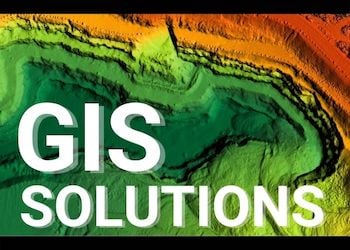
GIS and AEC professionals are finding new ways to collaborate and share data, thanks to some recent software rollouts. Much of the impetus stems from a partnership between industry heavyweights Esri and Autodesk, which first joined forces in 2017 to integrate their respective technologies. That partnership continues today.
ArcGIS GeoBIM
Esri officially released its ArcGIS GeoBIM, in early October, designed to help BIM project teams benefit more fully from GIS data and processes. Previously introduced as a beta version to a handful of customers, ArcGIS GeoBIM provides a web-based platform for AEC teams to collaborate using data from multiple systems in a geospatial context. The product connects to Autodesk BIM Collaborate Pro, a cloud-based design collaboration, coordination, and model co-authoring product built on the Autodesk Construction Cloud.
The ability to integrate and visualize project data in a single, cloud-to-cloud process helps users access current data more seamlessly, according to Anthony Renteria, Esri’s Product Manager for ArcGIS GeoBIM. “You’re working with live links to cloud-source data,” he explained. As BIM updates are made, the linked information viewed in a GIS environment is automatically updated. In the past, users importing BIM data into a GIS environment would have to re-import data if BIM updates were made.
Users can also be more selective in bringing data into GIS, focusing on specific types of data or geographical areas, said Renteria. “It’s a more flexible model,” he said.

ArcGIS GeoBIM connects to the Autodesk Construction Cloud to bring BIM data, documents, and related project information into a unified environment. Image source: Esri.
From Autodesk’s perspective, the Esri partnership and resulting products help customers design and build more sustainable urban environments and infrastructure, according to Theo Agelopoulos, Autodesk’s senior director for architecture, engineering, and construction. “Our customers need GIS data to create accurate context for the things they’re designing and making,” he said. “If CAD, BIM, and GIS workflows are disconnected, it can be cumbersome and time-consuming to pull the necessary information from one environment into the other. Our teams have worked closely to address this and bridge CAD, BIM, and GIS workflows.”
With more seamless BIM-GIS interaction, customers can “see their projects on a map and manage those projects in the local environment,” explained Agelopoulos. For example, the new capabilities can help users gain shareholder approvals during the planning phase, make better design decisions to mitigate against natural disasters such as flooding, and reduce disruption to communities during construction with better traffic management, he added.
Water/Wastewater and Asset Management
In addition to overall BIM-GIS integration, Autodesk has also recently introduced discipline-specific tools for AEC professionals. The February 2021 acquisition of Innovyze,Inc., a developer of water infrastructure software, increased Autodesk’s presence in the water/wastewater market and led to the release of Innovyze Info360 Asset, a cloud-based asset management tool.
Following a beta release in July, Info360 Asset is now commercially available as of October 2021 for management of wastewater systems. Practitioners can deliver and review inspections, assess conditions, and model risks within a unified environment. Info360 Asset’s tools help system managers identify the location, condition, and level of risk to keep sewer collection systems functioning properly. By providing ready access to information about pipes, manholes, and other components, managers can identify potential issues before they become problems and make data-driven decisions about system maintenance and improvements.

Info360 Asset provides tools for managing wastewater collection systems and making data-driven decisions. Image source: Autodesk.
Spacemaker and Total Carbon
Autodesk’s 2020 acquisition of Spacemaker has led to some interesting developments in site planning and design. Spacemaker recently launched Microclimate Analysis, a tool that enables real estate developers, urban planners, and architects to evaluate the thermal comfort of outdoor spaces. While methods of calculating urban heat island effects already exist, they’re often accessible only to expert users, take hours to run, or do not visualize the data.
Spacemaker’s Microclimate Analysis uses a visual approach to help teams see the impact of design decisions on thermal comfort and resolve issues collaboratively. Heat maps showing the duration and time-period of comfort and discomfort for outdoor spaces can help planners reduce risk in large-scale, high-cost and high-waste renovations and improvements in the future.
In addition to tools for analyzing what is being built, Autodesk is offering tools for how projects are built. To help meet emissions reduction targets, Autodesk introduced a beta version of Total Carbon, which combines Revit data with open-source energy analysis and material carbon data to provide cloud-based, real-time total carbon analysis. This tool also gives users insight to create sustainable designs in Revit. For example, users can evaluate how concrete versus brick or wood materials can impact embodied carbon of the building or infrastructure.

With Spacemaker, designers can run thermal studies to help with planning using AI-powered generative design. Image source: Autodesk, Spacemaker.
What Lies Ahead
The recent product rollouts will undoubtedly lead to more products and features to further expand BIM-GIS collaboration. Esri’s Renteria foresees continued growth of representing BIM and GIS data in 3D instead of in 2D. He also anticipates that the public rollout of ArcGIS GeoBIM will spur AEC professionals, owners, and operators to think of new ideas of how they can collaborate and manage systems throughout lifecycles. Customization and programming may also expand. Users can currently customize the ArcGIS GeoBIM environment, but will not initially have access to the application programming interfaces (APIs). That capability may be added later, he said.
Renteria also stressed that users must understand data sources and accessibility. “It’s critical to know where data resides and who has access to it,” he said. For example, without thorough awareness of data sources, users might assume greater accuracy of location data than intended and use planning-level data for final-design purposes. Regarding access to data, project teams should establish some type of control to limit who can change and update data.
Agelopoulos foresees “integration without translation” as a next step, where various stakeholders are able to connect the BIM process with location intelligence. “This will let different types of users — not just architects, engineers, and GIS professionals — visualize project data in a single, cloud-to-cloud solution during the design, construction, and operation of large capital infrastructure,” he said. “By creating these federated data environments, we see the opportunity to leverage AI and machine learning across CAD/BIM and GIS to drive even better outcomes in the future.”
Agelopoulos also sees digital twins playing a key role down the road. “We are seeing the need to connect our physical world to the digital with CAD and BIM to help enable the creation of a digital twin across the project life cycle. This calls for a more efficient and quality-driven process that benefits greatly from the convergence of CAD information, a BIM process, and GIS data.”
While the convergence of CAD, BIM, and GIS is not new, interesting twists lie ahead. Stay tuned as industry professionals start using new tools and developing innovative solutions. If you have ideas or projects you think are newsworthy, drop us a line at editors@cadalyst.com.
Andrew G. Roe
Cadalyst contributing editor Andrew G. Roe is a registered civil engineer and president of AGR Associates. He is author of Using Visual Basic with AutoCAD, published by Autodesk Press. He can be reached at editors@cadalyst.com.
View All Articles





Share This Post